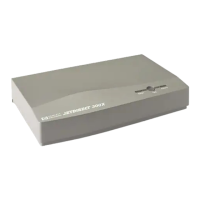For
HP
Internal Use
Only
then
retry
the
DAT command.
3.
You should see a $ nmdat>
prompt.
4.
Enter
a
GETDUMP
command
in
the
format
"GETDUMP
xxxxx" where
the
xxxxx is
the
5-character
dump
name
you gave
to
the
dump.
5.
The
console displays
an
I/0
Request message for
the
dump
tape.
Reply as normal.
6. Monitor
the
subsequent process for unusual error messages.
a.
The
DAT utility
may
abort
because
of
insufficient disk space.
The
memory
dump
may
require hundreds
of
thousands
of
sectors
of
permanent
disk space
on
the
system.
If
there
is
not
enough space
to
accomplish this
task,
the
DAT utility
aborts.
Report
this event
to
the
Response Center.
7.
Once
the
dump
is finished,
type
EXIT
to
leave
the
utility.
The
memory dump now resides as file(s)
in
the
DAT.TELESUP
account.
Step
6:
Call the Response Center.
In
the
last step, you
gather
information and call
the
Response Center
to
report
the
system
interruption:
1.
Gather
the
following information
to
give
to
the
Response Center engineer who will be
calling back:
a.
The
modem telephone number
and
Baud
rate.
b.
The
passwords
to
MGR.TELESUP
and
any additional security provisions needed
to
access
the
system on which
the
memory
dump
resides.
c.
The
operating
system release
(type
:SHOWME
to
get current release number).
d. All troubleshooting information gathered so far.
2.
Call
the
Response Center.
If
you are certain
the
problem is hardware, ask for "Hardware
Assistance."
Report
the
full system
abort
message
printed
on
the
console
and
the
contents
of
the
hex display. Also
report
any unusual messages encountered during
the
subsequent
system
startup.
3.
The
Response Center recommends
that
you allow users
to
log back on,
without
waiting for
the
Response Center engineer
to
call back.
If
you choose
to
wait for
the
Response Center engineer
to
call back before allowing users
back on, please
note
this fact
to
the
Response Center
Coordinator
so
that
your call
is
appropriately prioritized.
HP-UX Automatic Core Dump
As HP-UX reboots following a system panic,
the
computer may save a core file
to
disk. This
core file is a snapshot
of
physical memory
at
the
time
of
the
panic.
If
it
becomes necessary,
this core file can
be
analyzed using special tools
to
determine more
about
what
caused
the
panic.
Saving a core file is a two-part process:
5-26 Troubleshooting
